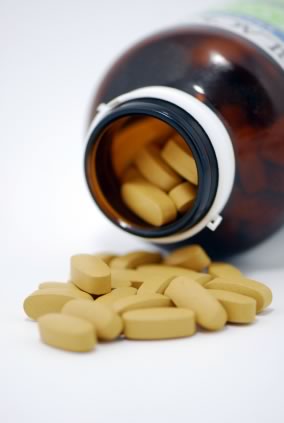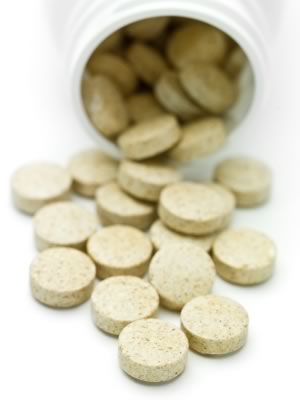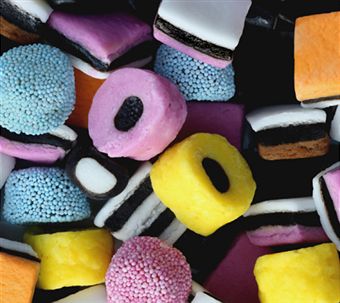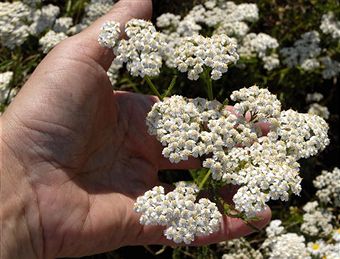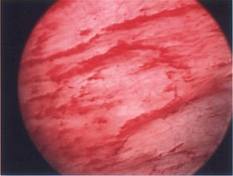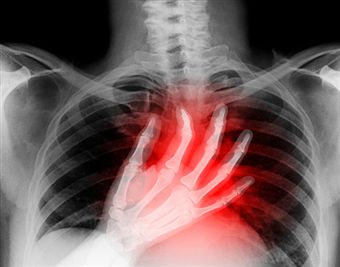Walk into any pharmacy or beauty department and you will find products with retinol. It is praised for its anti-aging abilities, and the positive benefits it has to offer your skin. Here is everything you need to know to understand retinol, its benefits and its uses.
What is Retinol?
Retinol is the animal form of vitamin A. It is fat-soluble and helps keep vision sharp and bones strong. Other forms of vitamin A include retinal, retinoic acid and retinyl esters, but retinol is the most usable. All version of vitamin A together are known as retinoids.
Retinol represents the vitamin A molecule in its complete state.
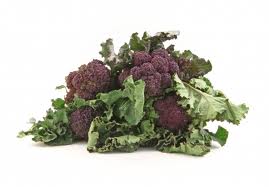
More on Fat-Soluble
Fat-soluble vitamins will be absorbed into the body through the intestinal tract. They are absorbed in the same manner as fats, so any condition or medication that interferes with the absorption of fats will also interfere with the absorption of fat-soluble vitamins. These vitamins are stored in the body, most often in the liver.
Where it’s Found
Retinol can be produced synthetically. It is typically ingested through natural sources including liver, eggs, kidney, and dairy produce. Vitamin A is also found in plants with high levels of beta-carotene like dark or yellow vegetables and in carrots.
Specifically; cod liver oil, butter, margarine, eggs, cheese and milk all contain retinoids. The level is typically 0.15 mg of retinoids for every 1.75 to 7 ounces.
How it’s Measured
Retinol is measured in International Units (IU). These refer to biological activity and so each compound will have a slightly different IU measurement. One IU of retinol will be equal to roughly 0.3 microgram, or 300 nanograms.
What it Does
Retinol helps epithelial cells function properly. Glycoprotein synthesis requires certain levels of vitamin A to take place. Vitamin A is also an important ingredient that is needed by our immune systems.
Most notably, the positive effects of vitamin A are seen in vision, night vision, tooth and bone development and strength, reproduction and healthy skin.
How it Affects Skin
Retinol is most commonly known for playing an important role in successful skin care. Retinol is used to help slow the effects of aging that are shown in the skin. Retinol helps to resurface and rejuvenate the skin, leaving users with skin that is more vibrant, clear and youthful.
Retinol has an extremely small molecular structure. This tiny structure is what enables retinol to penetrate deep into skin and go to work smoothing wrinkles and improving skin. Vitamin A in this form has the ability to improve the elasticity of the skin, smooth wrinkles and lines and increase moisture. The complexion is left, smooth, glowing and the damage that is done from age and the environment is greatly minimized and even reduced.
As the body ages, skin cells can gradually take on a misshapen and altered shape. However, these same cells have receptor sites that will quickly accept retinoic acid. As the retinoic acid is absorbed, the cell begins to function normally and will resume cell generation that is normal. Retinol contains this necessary and highly beneficial retinoic acid.
Controlling Acne
Retinol has also been used to help control acne and keratosis pilaris by adding it to topical creams. Not only does vitamin A help the skin regenerate and look more youthful, it also has an exfoliating feature that can help unclog pores and clear acne.
Research also shows that retinol can stimulate the production of new collagen, another critical ingredient in maintaining youthful, healthy skin.
People with very dry skin may find that they initially see some light flaking when they first begin using products with retinol. This stage, known as the retinoid effect, is nothing more than the skin acclimating to the vitamin. It will typically pass quickly and with no ill side effects.
The use of retinol products can make you more sensitive to the sun, so be sure to use a good sunscreen.
Vitamin A Deficiency
Night Blindness is a common symptom of a vitamin A deficiency. If the deficiency persists, other symptoms can include dry eye and Bitot’s spot, where keratin debris can build up in the conjunctiva.
Other symptoms of vitamin A deficiency include a poor ability to adapt to darkness (nyctalopia), dry hair and skin, fingernails that break easily, and corneal perforation. Pruritis, or itching, can occur. Keratomalacia is a condition where the cornea can become very dry. Xerophthalmia is another form of dry eye that can occur when the body is not receiving enough vitamin A.
The immune system can be compromised by a vitamin A deficiency. Vitamin A has been used to treat children with measles that have a vitamin A deficiency. Supplementing their diet with vitamin A has been found to shorten the duration and severity of the illness. Side effects to watch for include diarrhea and pneumonia.
When vitamin A levels are too low, the body can not perform glycoprotein synthesis. This inability can lead to corneal ulcers or even liquefaction.
Retinoid Overdose
When too much vitamin A is received in retinoid form, hypervitaminosis A can occur. When levels in excess of 25,000 IU/ day are taken, overdose can occur. Toxic overdose can occur at two different levels: acute and chronic. Acute toxicity can occur within a few hours or a few days of a large overdose. Chronic toxicity takes place when the increased levels are consumed over a longer period of time.
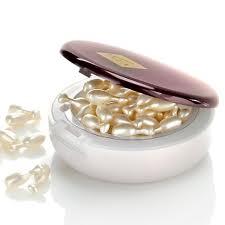
Symptoms to watch for include nausea, blurred vision, fatigue, weight-loss and menstrual abnormalities.
Pregnant women consuming an increased level of vitamin A early in the pregnancy are also at risk for birth defects. The FDA recommends that pregnant women should not consume more than 5,000 IU of preformed vitamin A in any given day. Because vitamin A is carried in fat cells, pregnant women should take care that they are not adding too much vitamin A to their diet.
Retin-A, Renova and Alpha Hydroxy’s
Retin-A and Renova are both derived from a synthetic derivative of vitamin A, are considered pharmaceuticals and are only available with a prescription.
Alpha Hydroxy’s are used to exfoliate the skin, revealing the fresh, clear skin just under the surface. Retinols are used to actually regenerate skin growth on a much deeper level.
Cosmetic Uses for Retinol
Retinol creams – these are used to help moisturize and condition the skin. They are known to improve blemishes, acne, wrinkles and abnormal pigmentations. They are thick without being oily. They are typically used at night as part of a daily skin care routine. Look for Retinol Cream 15 by BioMedic or Time Arrest Cream by Dr. Brandt. The BioMedic cream can be found on Amazon. The cost is roughly $45 for one fluid ounce. Dr. Brandt’s website offers the Time Arrest cream. This product runs about $100 for 1.7 fluid ounces.
Retinol Lotions – these are not as thick as creams, they are a more liquid product. These are used to keep the skin moisturized. They can be used at any time of the day but will prove most beneficial when used after showering or bathing. They can make skin appear more youthful and help to reverse the damages of the sun. It can be carried with you and applied anytime your skin feels dehydrated, itchy or irritated. Afirm 3x BY Afirm can be found at Afirmskincare.com and will cost about $48 for just over one fluid ounce. Retinol Cream 60 by BioMedicare is available at the Dermstore online and will cost about $58 for one fluid ounce.
Retinol Serums – Like creams, they should only be applied once a day, preferably before bedtime. They have a greater ability to penetrate the skin, providing greater benefits to the skin. Serums are recommended for combating deep wrinkles, photo damage and any other signs of premature aging. Retinol Smoothing Serum 2x by Replenix is also available at the Dermstore online. The package size is 1.0 fluid ounce and will cost roughly $50.
Retinol Oils can be used instead of lotions or creams. Oils are a good choice for fighting the damage caused by environmental factors. Timeless Caviar Repair Cream by Pevonia Botanica. This treatment will also help increase oxygenation to your skin. 1.7 fluid ounces of this oil will cost about $171 through shoppevonia.com.
Retinol Eye Treatments – these are designed specifically for use on the sensitive area around the eyes. These treatments will effectively smooth crowsfeet, wrinkles and other fine lines. Skin Rejuvenation Eye Cream by MD Forte will run $60 for ½ fluid ounce through the Dermstore online.
Retinol Hand Treatments – your hands receive rough treatment every single day. They are constantly being washed with soap and water, as well as being exposed to the elements, cleaning detergents and environmental pollutants. The skin can become dry, brittle and even cracked. Using retinol hand treatments will bring healthy, smooth skin back to your hands, as well as strengthening your nails. Multivitamin Hand & Nail Treatment by Dermalogica can be found for as little as $24 for 2.5 fluid ounces through Amazon.
Retinol Lip Treatments – The lips are exposed to extreme air temperatures, and food temperatures, as well as other environmental dangers. The lips can gradually thin out, become drier and crack. A moisturizer that contains retinol can help plump your lips back up, making them healthier and smoother. PlumpLips Lip Plumper and Gloss by Freeze 24/7 can also be found through Amazon for as little $16.00.
Retinol Acne Treatments – Acne occurs when skin’s pores are blocked. The bacteria in the skin release a chemical to unclog the pores, and pimples result. Retinol has been proven to not only heal existing outbreaks, but also to reduce scars from past outbreaks and prevent future outbreaks. Acne Complex Kit by Murad, Exfoliating Acne Treatment Gel and Moisturing Acne Treatment Gel are all products produced by Murad to fight acne. At the Murad website you can get the entire acne treatment system for only $30.

